
[ad_1]

Ships face several types of problems that arise from different types of conditions at sea. These challenges include changing weather, seawater effects, navigation issues, and geographical factors. However, the biggest doubt that hangs over their survival ability is about how the ships survive storms.
The tropical regions see the highest number of storms due to their strategic geography. An average of 75-85 storms originates in this belt each year. However, 60% of these do not disturb the land areas.
These storms are different from each other- in terms of size, severity, and behaviour. While the smaller ones disappear in 24 -48 hours, the bigger ones can last for over a week! Hence, the heavy traffic of vessels across the storm region requires ships to be smart and responsive.
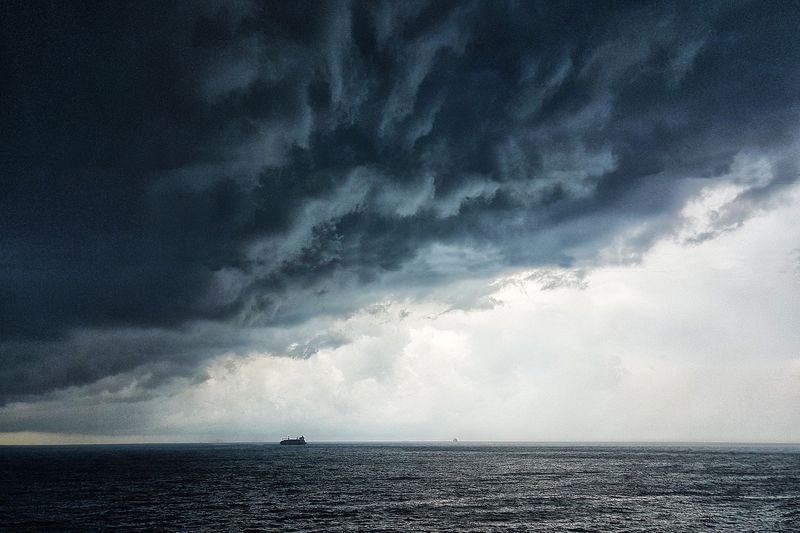
Credit: Pixabay
This includes their ability to safely manoeuvre, practice good seaman habits, and follow modern communication techniques. Less than 200 vessels (across all sizes) suffer from marine accidents and capsize every year. For a total of 80,000+ ships above the standard size range, the figure is a huge positive.
We give you a closer look at how do ships survive storms while moving across the ocean. The article also includes the structural and propulsion factors that equip ships for such difficulties.
Behaviour Pattern of Storms
Storms originate from many reasons out at sea. However, the main factor is the pressure difference. Oceans behave differently in comparison to land in terms of surface and overall temperatures.
This behaviour pattern leading to air draft creates 2 different storm behaviours:
- Cyclones
- Tornados
Cyclone
With a slow rise of temperature around the surface, the air heats up too. This creates a pressure draft with the lighter air going towards the top. A lower pressure arises around the surface from this.
Hence, the nearby air flows inwards, creating a circular pattern. This region of depression creates a circular pattern of violent air and water movement in the form of a cyclone. Cyclones often have the worst behavior around coastal places. For example, the port of Headland stops its operation for 4 months every year for cyclone interruptions.
The average cycle speed can be as low as 20mph and as high as 150 mph. This means the categorization of storms helps the weather centers to inform vessels about the danger ahead.

Tornados
Tornados follow a fast decline of winds from the falling clouds in an area. This invites a downward flow of air from a relatively high position. Hence, ships witness sea tornados that rise as much as 150 meters.
Moreover, the average speed of these disturbing forces goes beyond 50 miles an hour! This creates their entire nearby region to experience winds along with harsh rains. What follows along are high swells and heavy rolling for vessels from these wind forces.
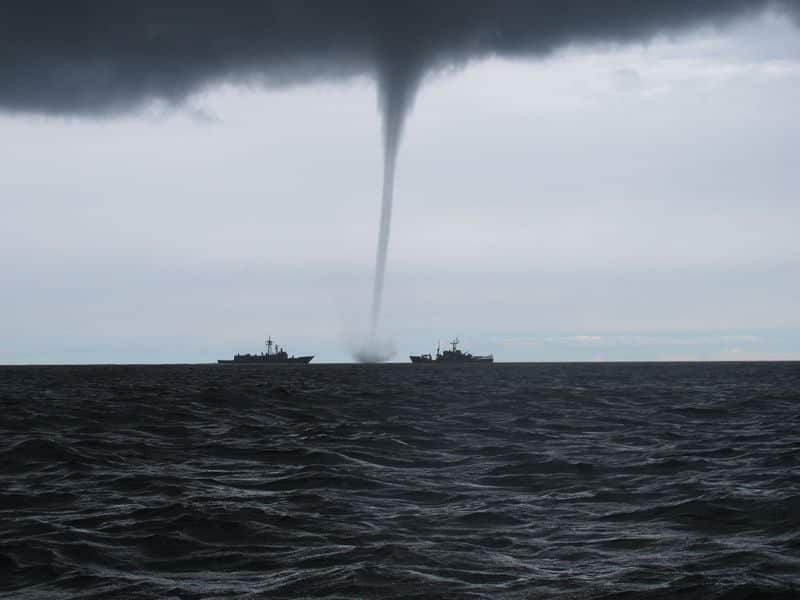
Credit: Pixabay
Ships Surviving the Storms: Navigation Factors
With advancements in marine technology, marine accidents from rough weather are reducing every year. In 2019, around 16 sea-going vessels highlighted reports of rough weather causing irreparable damage.
Hence, the latest technological developments contribute hugely to how ships survive storms at sea.
Evolution of ECDIS
The biggest development for the survival of seagoing ships is the introduction of ECDIS in the early 2000s. The Electronic Chart Display and Information System have significantly become popular over the shortcomings of paper charts.
While the display does not have dynamic abilities, it gives the flexibility to use other tools. With sensible plots and nearby vessel behaviour patterns, the navigation team benefits hugely. It gives them a big advantage in conditions that need to change the navigational patterns.
Weather Routing
Despite its electronic origin and benefits, ECDIS remains a chart. As such, the navigating officers get the information to decide the route the ship needs to follow for safe sailing.
Weather Routing agencies, private or public, provide this critical information. These agencies use three major systems to connect the information across:
- Remote Communication Satellite
- Navigation Satellite
- Remote Sensing Satellite
Each shipping company connects its ship to such premium quality weather routing services. At the time of departure, the ships get an input of their next destination. Thereafter, the second officer connects a plot suitable to reach the destination within safety regulations.
With changing weather, the weather routing agency delivers an update of the storms within the route. This allows a ship to either change its course altogether or to change its speed accordingly.
Local Weather Alerts
These alerts often come as coastal alerts or sea warnings for ships in their coastal region. Regions such as the Cape of Good Hope and Gujarat coastal waters in India have troubling weather changes. This needs local monitoring to keep vessels aware of the hourly condition.
In the question of how do ships survive storms, dynamic response plays a big part. Hence, a vessel depends completely on these local alerts to inform its crew of the potential danger.
The majority of these alerts follow the local communication channels. A vessel intending to enter their waters will communicate the intention well in advance. The local bodies then keep a track of their position and simultaneously let out warnings if necessary.
Under severe conditions, these alerts also delay the vessel berthing or cargo operations. For example, the condition of Bombay High is not suitable for container operations with severe winds (75 mph+).
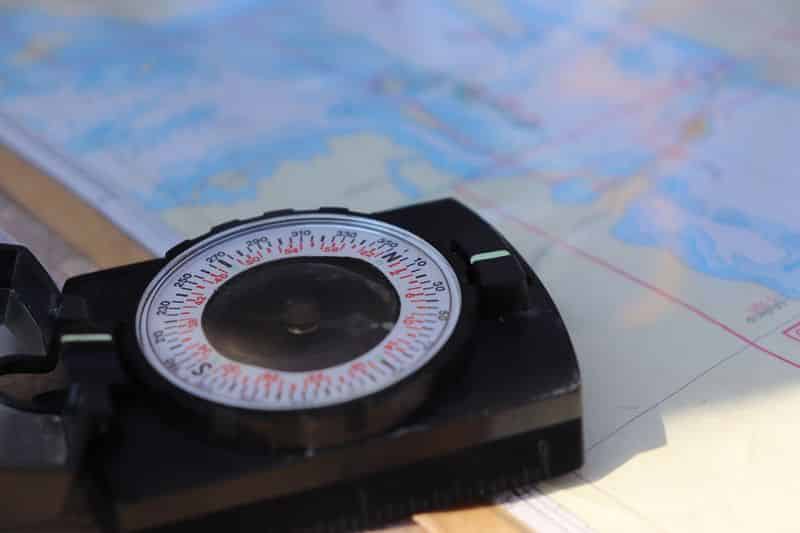
Credit: Pixabay
Satellite Communication and GPS
In every navigational factor, the biggest and most common contribution is that of satellite and GPS tracking. These systems ensure that neither the vessel sails blind nor the reporting systems are unaware of the condition.
A strong satellite communication network also ensures that modern ships are always in the loop. This will give the master an additional advantage of communicating at will for navigational safety.
For passenger vessels and cargo ships, the satellite images also prove a judgment factor. Combining them with sailing experience helps officers analyze the danger zones. Hence, even when a storm is inevitable, the ship decides a trajectory safe enough for passage.
Braving the Storms: Ship Design Factors
In addition to navigation safety standards, design changes explain how ships survive storms. May it is the double hull evolution of the 1990s or the evolving SOLAS guidelines, each contributes uniquely.
Meanwhile, certain design factors stand above the rest in giving ships additional survival strength. This comes in handy when the vessel is about to face rough weather or storms of high intensity.
Keeping the Storm “Bow First”
The bow of the ship contains the highest number of strengthening members. Each frame is closer with additional webs that keep the integrity watertight. Moreover, the forward collision bulkhead also presents an additional safety net for head-on contact.
On the contrary, taking a hit on the sides (port or starboard) is quite critical. With the changing metacentric height, the hit can push the vessel beyond an angle of stable equilibrium. Hence, the unfortunate combination of a large swell with windward force will make the ship list irrecoverably.
Transverse Framing
Adapting a transverse framing reinforces the important parts of a ship. This gives more strength to the cargo hatches, tanks, and other hollow parts. The transverse design also reduces the panting of the plates and lowers the bending moment.
Hence, in the event of a storm, the ship stays flexible and strong too. Moreover, this serves way better than a typically stiff design and higher buckling tendency
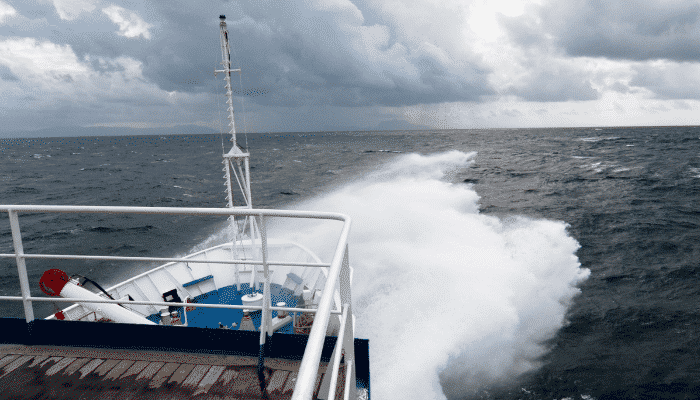
Watertight Integrity
In the least thinkable and unfortunate event of water ingress, integrity is highly important. Incidents from the early 1980’s such as the Derbyshire sinking present an undeniable example of this.
The extension of watertight bulkheads to the upper continuous deck compartmentalizes the vessel. This means a ship retains its stability even if water enters the structure due to damages. Moreover, the forward stores, openings, and tank heads all have a non-return design.
It gives them extra protection to stop water from getting it despite the intensity of impact being high. Strong watertight integrity explains how do ships survive storms even after considerable damages.
Steering Gear Design
The steering ability of a ship keeps it safe under every sailing condition. Under heavy storms, the vessel needs quick manoeuvrability to make sure the impacts are minimal. Moreover, the steering also helps in securing a safe passage through the rising swell.
Every seagoing ship of passenger and cargo abilities has a steering safety mechanism. These employ one of (or multiple) the following arrangements:
- Single Failure Criteria
- Emergency Steering Backup
- 100% Redundancy
- Safe-Matic Steering
Through this, a steering system always has a backup option of full steering capacity. It allows for safe manoeuvring at varying loads and under changing weather, maintaining the ship’s mobility. Under no conditions will it allow the vessel to lose steering power in storms and avoid disasters.
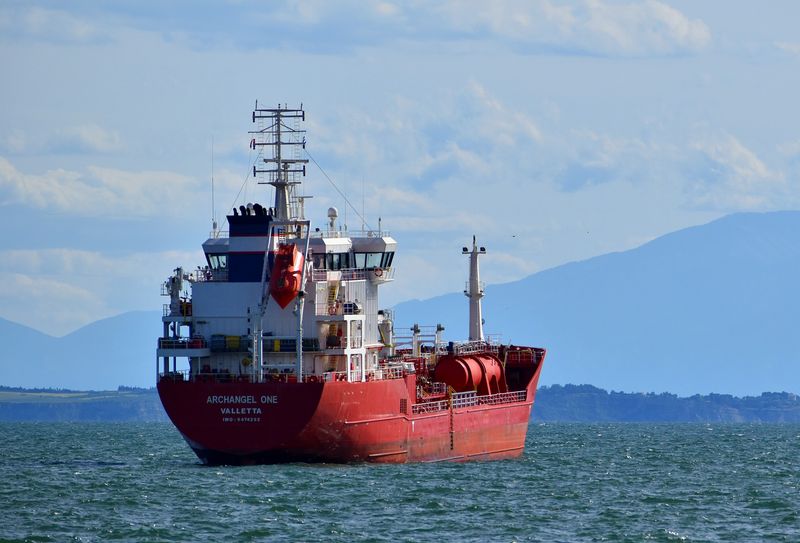
Credit: Pixabay
Good Sailing Practices for Surviving the Storms
Despite all the structural and technical perfection, ships often fail under testing conditions. The biggest contribution to these incidents comes from unfair sailing practices or bad seamanship! With all the systems and contingencies in place, the human factor remains to decide.
Hence, one of the take away from how do ships survive storms is the ability of their crew. These include navigational, maintenance, housekeeping, and other such techniques.
Housekeeping Standards
Every year, over 1200 incidents of major and minor impact occur due to bad seamanship practices. These include the absence of awareness on deck and in the engine room while securing.
Storms always guarantee rough weather, despite the vessel missing them by a fair distance. Certain tropical cyclones show an outward radius of 100 miles and above.
With continuous rolling and pitching, safety standards have become more important than ever.
- Securing of vent heads, goosenecks, hatch covers, and any other openings that compromise water tightness.
- Lashing of containers at regular intervals to stop any shift in their relative location. This also avoids any unfortunate listing of the ship that can add to rough weather problems.
- Securing heavy spares or machinery can lead to internal accidents. This will prevent any falls or indents leading to injury or structural compromise. For example, a bad securing of a heavy liner can cause accidents or structural damages in the engine room.
Navigational Awareness
Ships generally adapt a counterclockwise approach when going towards a storm. This also includes maintaining a course as far away from the “eye” as possible. The standard process of riding the swell or taking the waves at the front comes under the radar of awareness.
The bridge watchkeeping standards play an important role in every aspect. This includes the master’s and chief mate’s ability to put their experience up for the count.
Propulsion and Machinery Maintenance
A loss of propulsion under testing conditions can be the biggest towards capsizing. Moreover, accidents resulting from the loss of power or propulsion do not give second chances for recovery.
A predictive maintenance standard for machinery upkeep makes sure such incidents are rare. This can range from regular cleaning of filters to generator routines for emergency preparedness. The emergency source of power also needs regular checks for availability under testing times.
Standby arrangements for critical parts such as backwash filter elements look minor but have a big impact.
Good engineering standards showcase avoiding changing over of fuel oil bunker tanks before facing heavy weather. Moreover, remaining or low-level suction from empty bunker tanks is avoidable too.
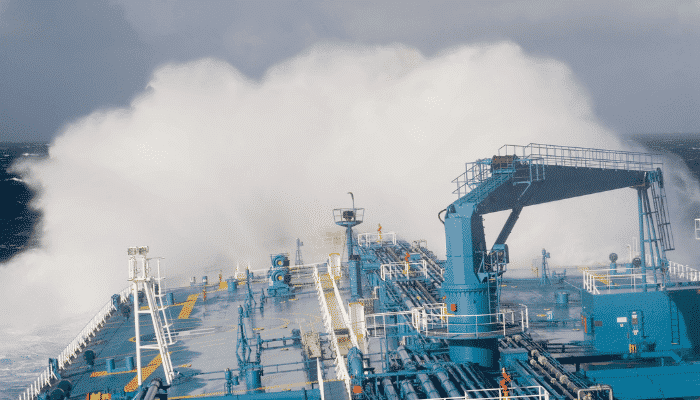
Ships Braving the Storms
A variety of such contributing factors decide how do ships survive storms with perfection. However, with 726 incidents of severe nature in 2020, the scope of improvement is still wide. The human error factor arising from changing global situations contributes to the toll too.
Many climatic changes such as global warming make storms unpredictable. This makes dynamic responsiveness more critical than ever.
With increasing vessel sizes and capacity, manoeuvring techniques evolve simultaneously. Hence, the modern shipping interventions, stronger than ever, provide a haven for the maritime future.
You might also like to read:
- What Seafarers Should Do After The Vessel Receives Storm Warning?
- What to do When Ship Encounters Rough Weather?
- What Actions Ship Must Take For Tropical Revolving Storm (TRS)?
- Why the Bay of Biscay is Dangerous for Ships?
- 12 Types of Maritime Accidents
Disclaimer: The authors’ views expressed in this article do not necessarily reflect the views of Marine Insight. Data and charts, if used, in the article have been sourced from available information and have not been authenticated by any statutory authority. The author and Marine Insight do not claim it to be accurate nor accept any responsibility for the same. The views constitute only the opinions and do not constitute any guidelines or recommendations on any course of action to be followed by the reader.
How Do Ships Survive Storms? appeared first on Marine Insight – The Maritime Industry Guide
[ad_2]
This article has been posted as is from Source